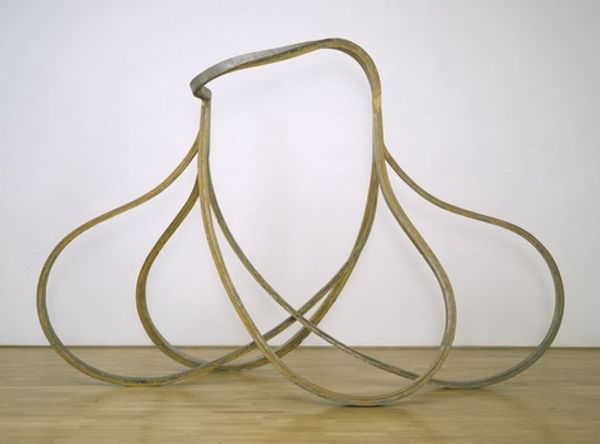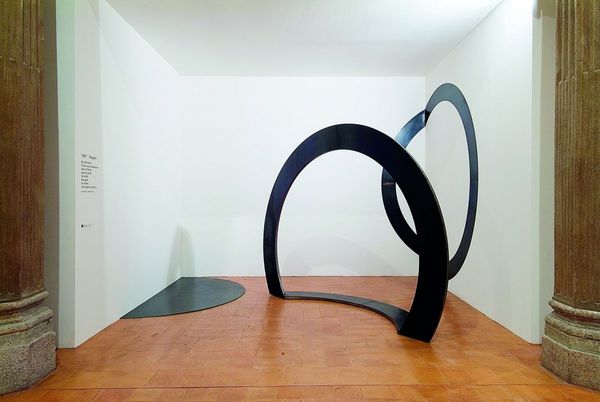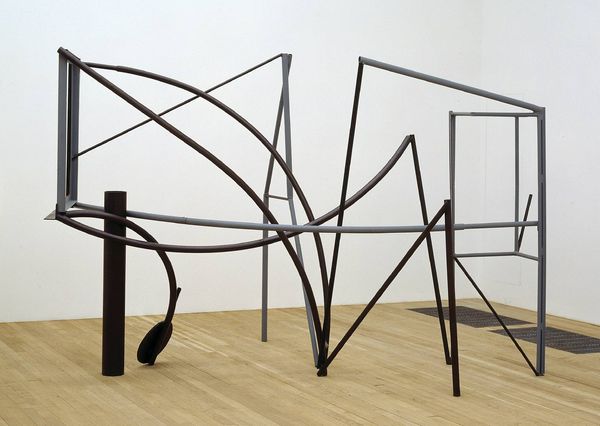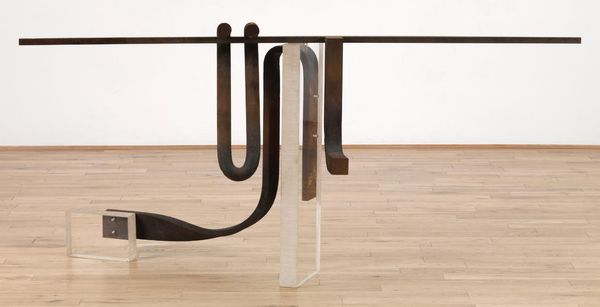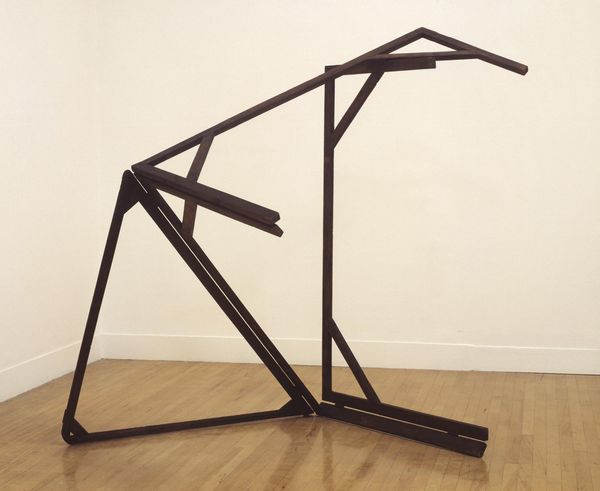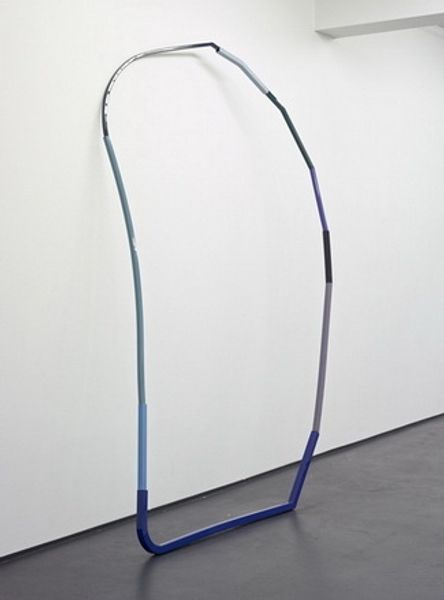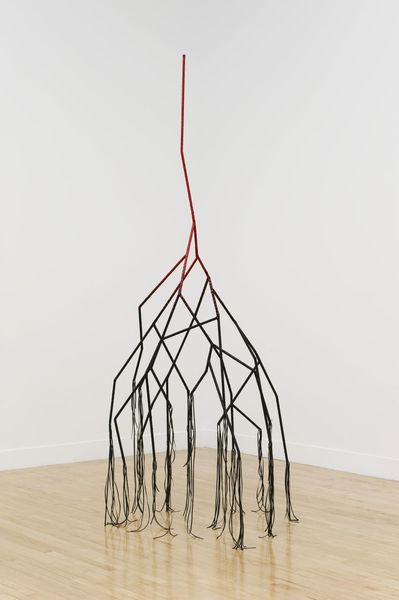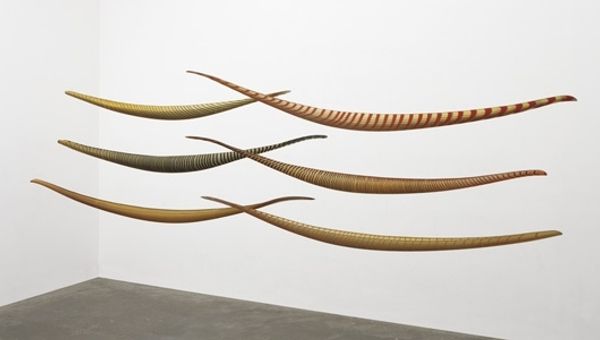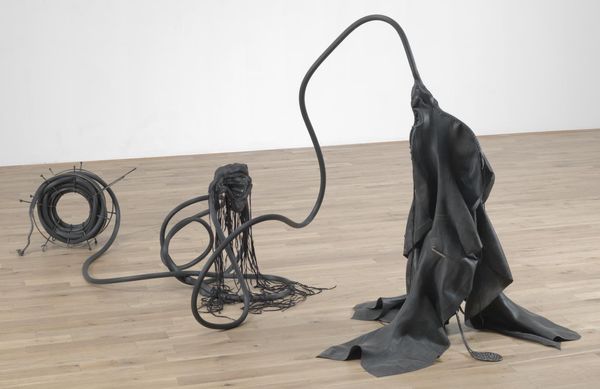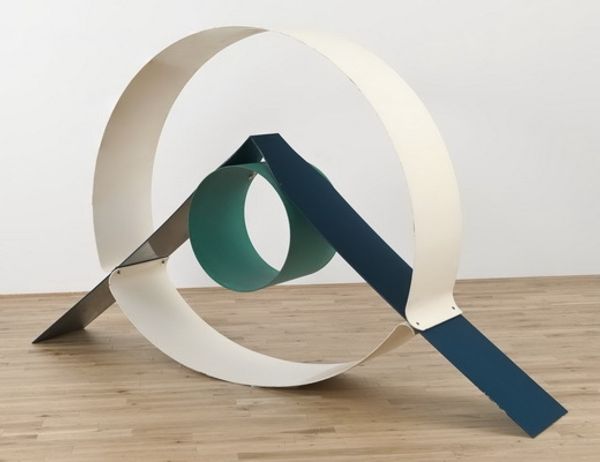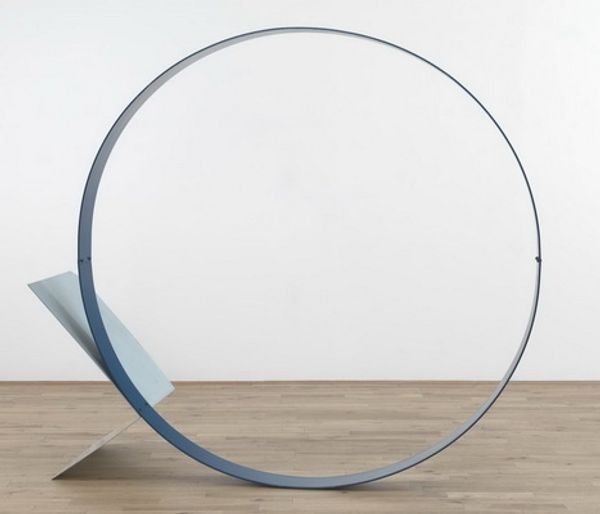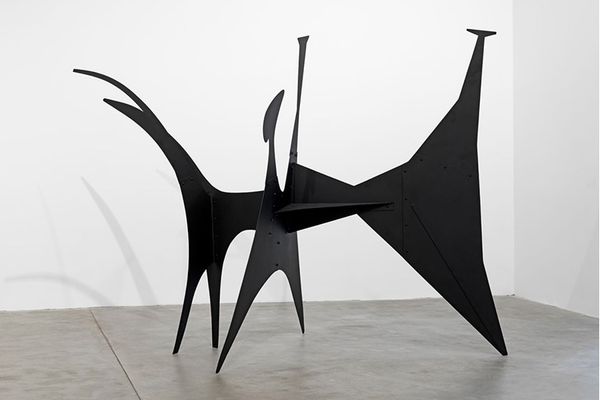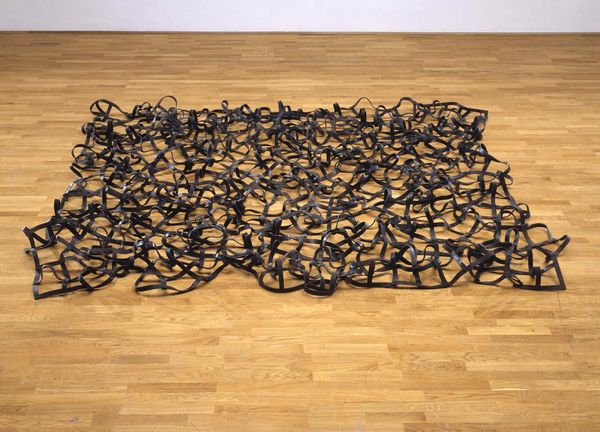
Dimensions: object: 1511 x 2661 x 1499 mm
Copyright: © William Tucker | CC-BY-NC-ND 4.0 DEED, Photo: Tate
Curator: William Tucker’s "Beulah i" is a compelling piece. It challenges traditional notions of form and representation in sculpture. Editor: Wow. First impression? It's like a giant, discarded rubber band. Kinda playful, yet also a bit… ominous, you know? Curator: Tucker, born in 1935, often draws from mythology and the human figure, exploring themes of fragmentation and transformation. Looking at how it interacts with the space. Editor: Yeah, it kinda dances, doesn’t it? This one continuous line twisting and turning. I wonder what it’d be like to trace it with my eyes closed. Curator: It feels like an exploration of the boundaries of form, and our perception of it. How do you think that it speaks to contemporary issues of identity and fluidity? Editor: It feels like a dream, a tangled thought almost. Makes me wonder about the narratives we tell ourselves and the messy beauty of being human. Curator: Absolutely. This sculpture invites us to question fixed identities. Editor: Makes you think, doesn't it?
Comments
Join the conversation
Join millions of artists and users on Artera today and experience the ultimate creative platform.
tate 8 months ago
⋮
William Tucker said the essential quality of sculpture was ‘visibility’. By this he meant not simply that a work could be seen, but that it should actively seek to ‘meet, attract and hold our sight’. In order to achieve this, Tucker made works that combined apparent simplicity with a complexity that was only gradually revealed. In the 1970s, his works were described as ‘impossible objects’, since they were extremely difficult to hold accurately in the memory despite their simplicity. Viewers were made aware of their own perceptual efforts to understand the form and structure of works such as this. Gallery label, August 2004
